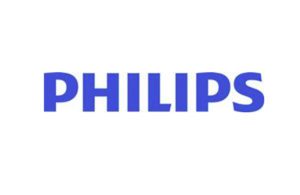 Philips (NYSE:PHG) today announced various clinical study results validating its innovations in cardiac and cardiovascular care.
Philips (NYSE:PHG) today announced various clinical study results validating its innovations in cardiac and cardiovascular care.
Amsterdam-based Philips presented its findings at ACC.23/WCC in New Orleans. Results included trends with intravascular imaging, early cardiac implant removal and intracardiac echocardiography catheters.
“To make a real difference to patients, it is vitally important that medical innovations are validated in real-life clinical practice so that clinician decision-making and guideline setting are firmly evidence-based. At Philips, we are deeply committed to making sure this is the case,” said Dr. Atul Gupta, CMO for image-guided therapy at Philips. “The positive clinical study results announced today are further evidence of how we are continuously working with our clinical partners to co-create new innovations and demonstrate how they improve outcomes for patients.”
Philips evaluates intravascular imaging during percutaneous coronary intervention
Dr. Reza Fazel, an interventional cardiologist at Beth Israel Deaconess Medical Center in Boston, presented initial results from real-world Medicare data. The data analyzed more than 1 million patients to evaluate trends with intravascular imaging (IVI) during PCI procedures. Dr. Eric Secemsky, director of vascular intervention at BIDMC, led the study.
Data evaluated more than 1 million patients undergoing PCI procedures between Jan. 1, 2013, and Dec. 31, 2019. Preliminary results revealed that IVI use as an adjunct to angiography rose by 62% during the period. Researchers associated this rise with superior patient outcomes.
Philips’ IVI offering includes intravascular ultrasound catheters, co-registration and automated measurement tools. These can accompany the Philips Azurion image-guided therapy system.
Removal of infected cardiac implantable electronic devices (CIEDs)
Dr. Sean Pokorny presented results quantifying reduced hospital costs related to the early removal of CIEDs. Pokorney serves as assistant professor of medicine and a member of the Duke Clinical Research Institute at Duke University School of Medicine.
Pokorney and his team at Duke analyzed the records of more than one million CIED implant patients in the ‘U.S. 100% Medicare fee-for-service’ population. The analysis covered the period between Jan. 1, 2006, to Dec. 31, 2019.
Of the 9,867 patients diagnosed with a CIED infection 12 months or more after implantation, only 13.3% underwent extraction within six days. Only 5.2% underwent extraction between seven and 30 days, according to Philips.
“This data highlights a major gap in care among our CIED infection patients, which results in higher mortality, more health care utilization, and higher cost of care. Quality improvement interventions with focused systems of care are needed to optimize patient outcomes,” said Pokorney.
Complete device extraction within six days of infection diagnosis was associated with lower (21%) all-cause hospitalization in follow-up. It also led to 42% lower healthcare expenditure compared those without device extractions. Timely extraction led to lower hospitalization rates, too, Philips said.
“CIED infection is a healthcare crisis and EMR (electronic medical records) are essential in identifying patients and minimizing time to extraction,” said Dr. John Andriulli. “It must be ubiquitously shared between hospital systems to improve length of stay and more importantly to impact the potential reduction in mortality. This is especially true for outside hospital transfers. This is when the EMR becomes even more important.”
Philips reports on 3D intracardiac echocardiography
Dr. Mohamed Alkhouli, professor of medicine at Mayo Clinic School of Medicine, presented real-world safety and performance results. This study evaluated the Philips VeriSight Pro 3D ICE intracardiac echocardiography catheter in image-guided, minimally invasive cardiac procedures.
The prospective, non-randomized, multi-center, observational study evaluated 155 patients. These patients underwent evaluation for a range of percutaneous cardiac intervention procedures. Philips said it included left atrial appendage occlusion (LAAO), cardiac ablation, heart valve replacement, and patent foramen ovale (PFO). It also featured atrial septal defect (ASD — “hole in the heart” — repair procedures.
Philips designed its ICE catheter with a tip-mounted ultrasound transducer. The surgeon can route the catheter to the heart via the blood vessels and a small incision in the skin. Philips said ICE represents a more comfortable option than a transesophageal echocardiogram (TEE). It also requires less sedation or anesthesia.
The study evaluated patients until discharge or 48 hours after their procedure. It demonstrated safety with no reported periprocedural device-related adverse events. VeriSight Pro 3D ICE demonstrated acceptable or better image quality compared to TEE or competitive ICE technology in more than 95% of procedures. Philips said it also proved an acceptable or better surrogate to TEE 89.7% of the time.